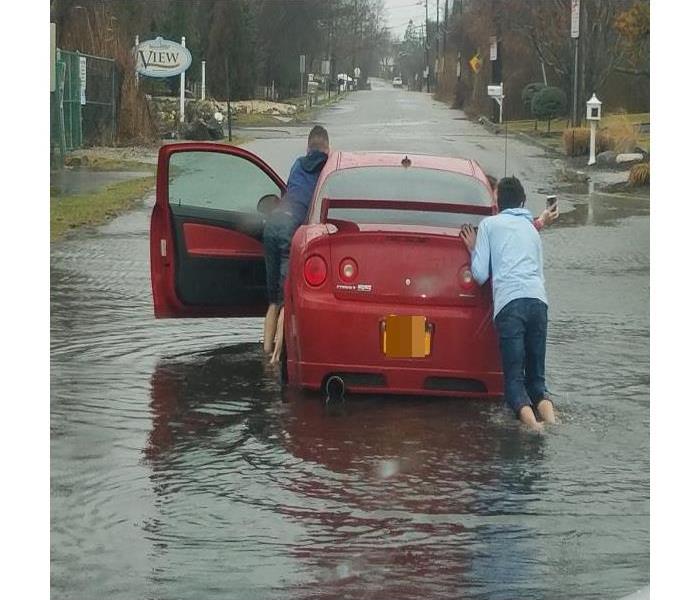Storm Preparedness
3/7/2018 (Permalink)
Severe weather can happen any time, anywhere. We here on Long Island are experiencing Nor'Easter. Do you know the difference between a severe weather watch vs. a warning? Watch: Conditions are favorable for severe weather and it is possible. Remain alert for possible further warnings. Warnings: Severe weather has been spotted or indicated by radar. Take cover. Safety Tips: The safest place to be during high winds is indoors. Postpone outdoor activities if a wind advisory or high wind warning has been issued. High Winds can bring down trees and power lines and can turn unsecured objects into dangerous projectiles. To protect against the hazard of high winds, Long Islanders should:
- Check the area immediately surrounding your home or business for unsecured objects or potentially dangerous conditions. Tree limbs garbage cans, yard debris or other materials that can be moved by the wind are potential projectiles aimed at your home or parked vehicles.
- Bring inside loose, lightweight objects such as lawn furniture, potted plants garbage cans, tools and toys.
- Anchor objects that would be unsafe outside, such as a gas grills or propane tanks.
- Keep both hands on the wheel and slow down.
- Watch for objects blowing across the roadway and into your path.
- Keep a safe distance from cars in adjacent lanes, as strong gusts could push a car outside its lane of travel.
- Take extra care in a high profile vehicle such as trucks , vans and SUVs, as these vehicles and more prone to being pushed or flipped by high wind gusts.
- Prepare a go bag that you can grab in case you need to leave your home in a hurry.
- Learn the safest route from you home or workplace to safe, high ground in case you have to evacuate.
- When outside, avoid walking and driving through flooded areas. As few as six inches of moving water can knock a person over. Six inches of water will reach the bottom of most passenger cars, causing loss of control and possible stalling. One or two feet of water can carry away a vehicle.






 24/7 Emergency Service
24/7 Emergency Service